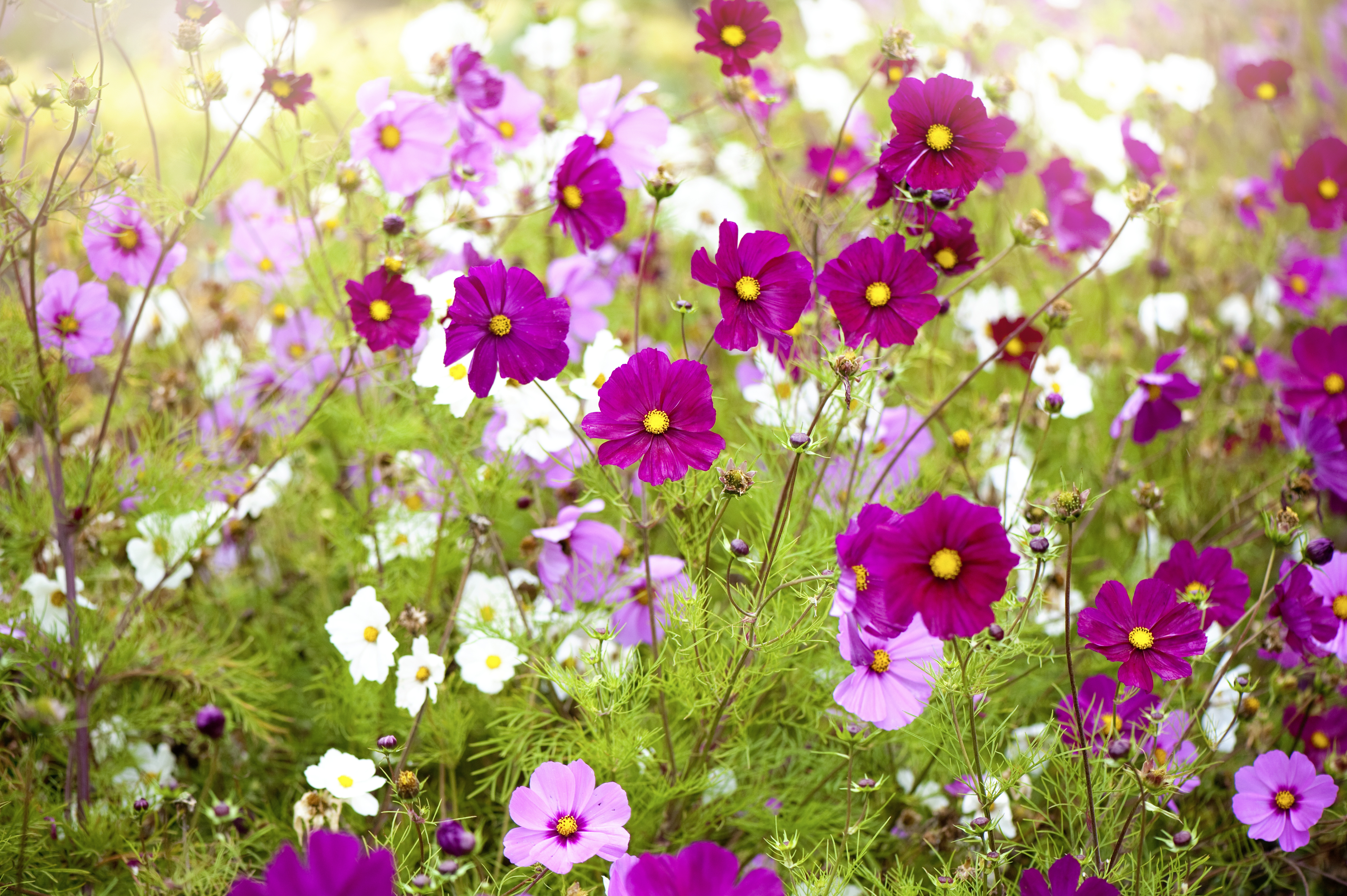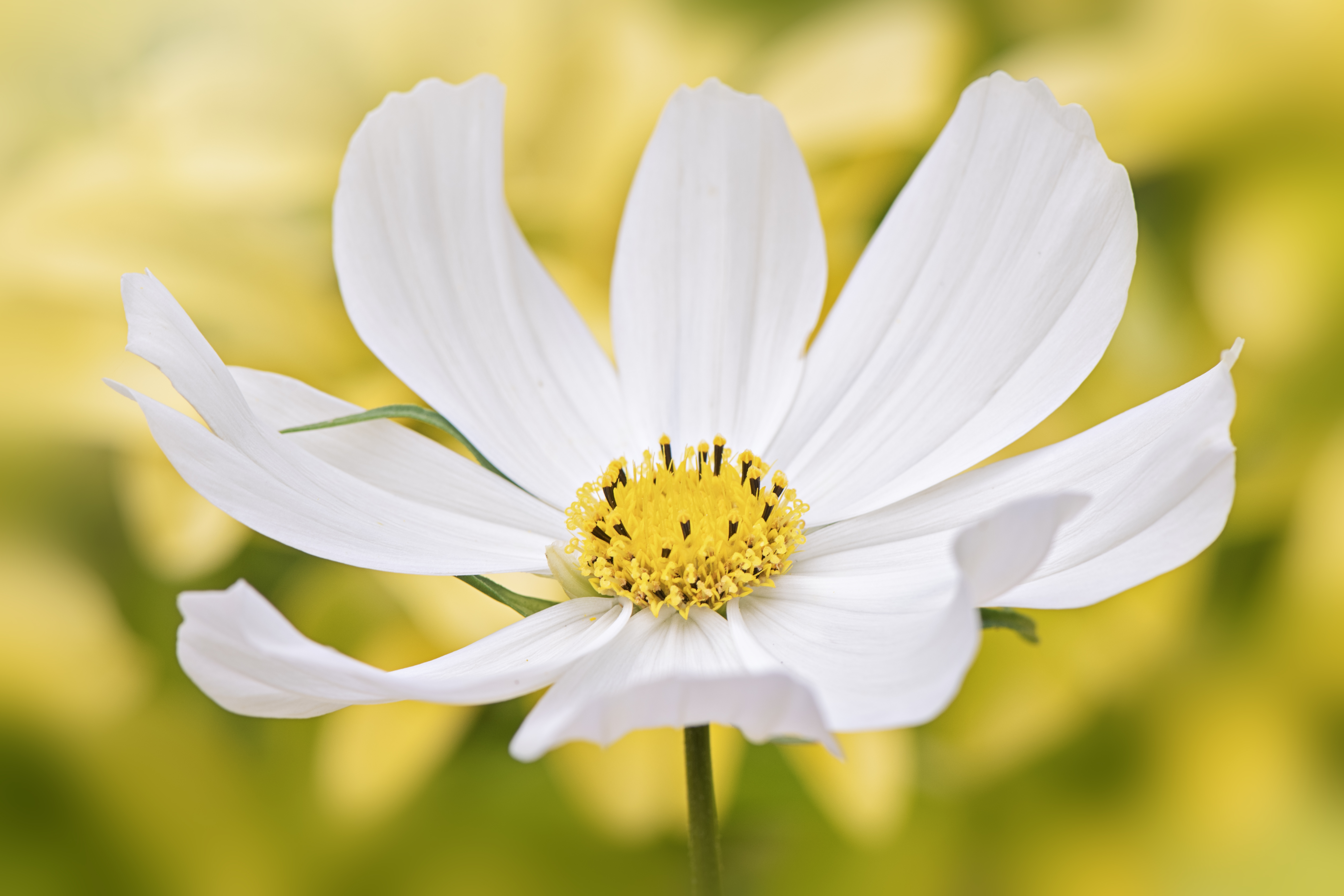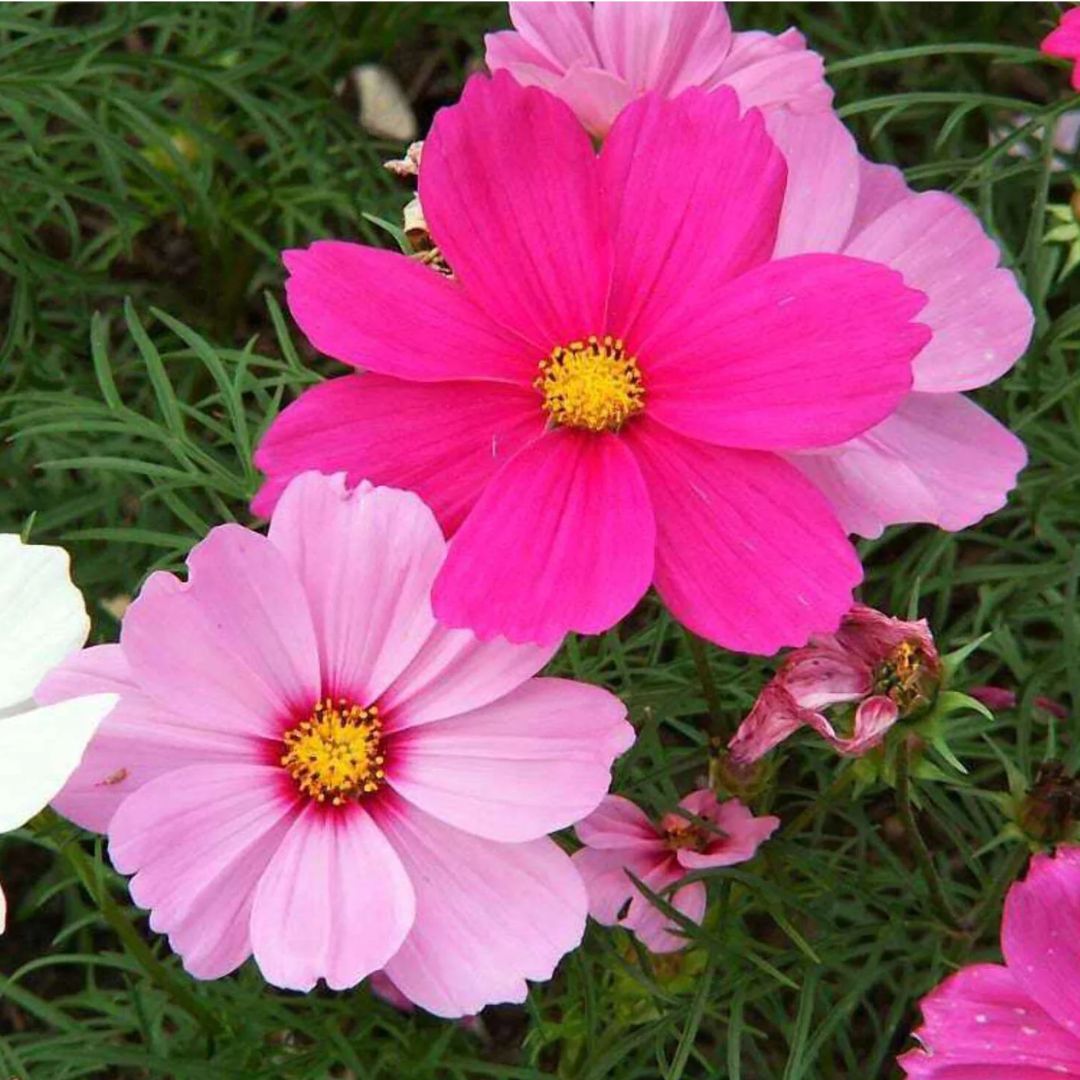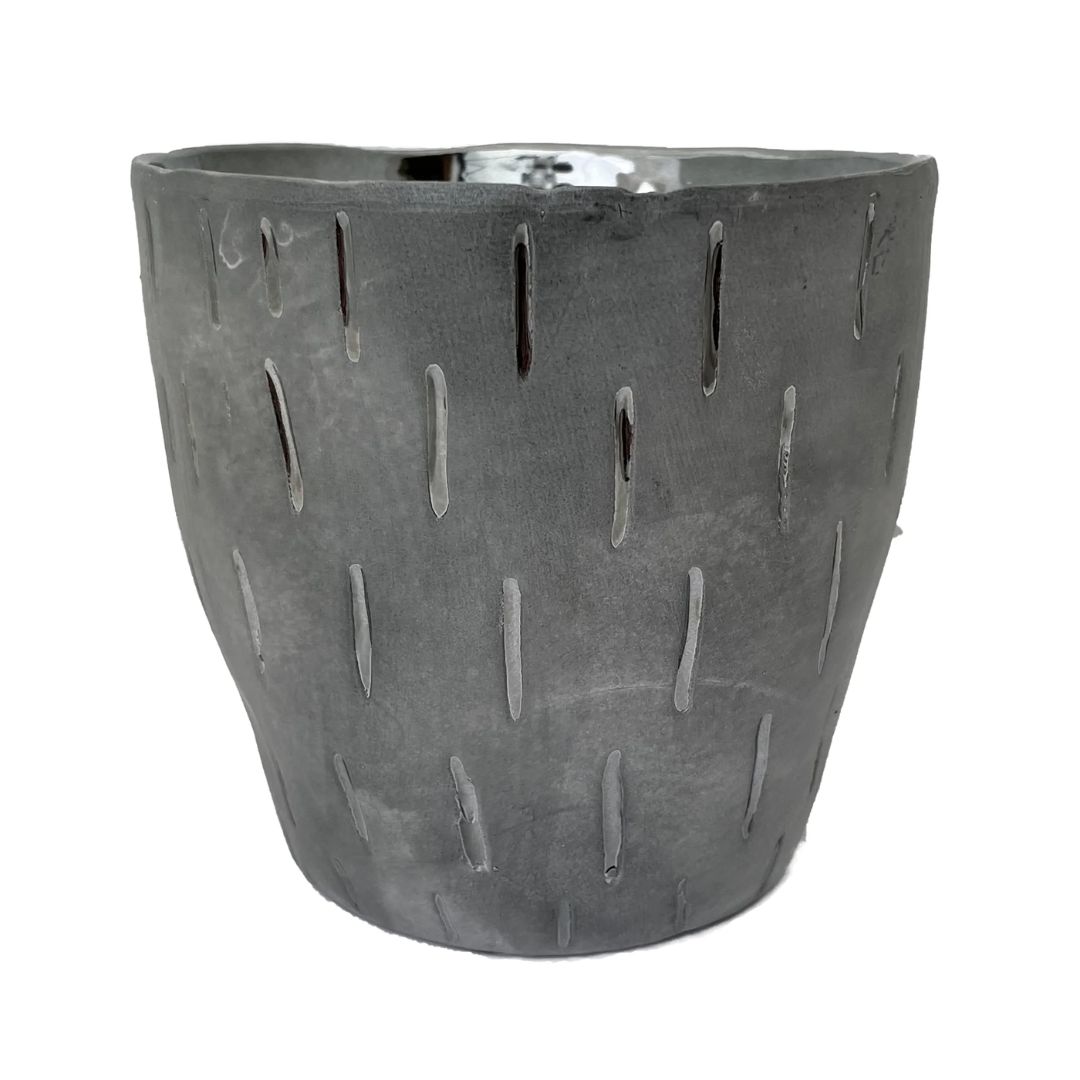How to Grow Cosmos — Planting Tips to Help These Cheerful Summer Flowers Thrive
Bright and full of life, if you are looking to grow cosmos in your backyard, here are some expert tips and tricks you should follow


Elegant and enchanting in every way — cosmos are certainly the perfect little bloom for the summer season. Known to be a freely flowering annual plant, these daisy-like flowers with slender stems are truly a magnificent touch to outdoor spaces.
'Cosmos are known for their bright, daisy-like blooms and feathery foliage,' says gardening expert Tony O'Neill from Simplify Gardening. 'They are native to Mexico and Central America and are popular in gardens for their long blooming season, which lasts from summer through fall. Cosmos are relatively easy to grow and are a favorite for pollinators like bees and butterflies'.
This plant is ideal if you are looking for the best flowers that bloom in summer and they can certainly elevate your yard. But what is the best way to grow and care for these blooms? Here is everything you need to know — according to a gardening expert.
How to Grow Cosmos
If you are looking for fast-growing flower seeds then cosmos are a must in your backyard. The best time to sow cosmos seeds is in early spring so that they can grow and develop just in time for the summer season.
Here are a few steps you can follow to grow cosmos — according to Gardening expert, Tony O'Neill.
Step 1: Choose a Location: Tony tell us that it is best to 'select a sunny spot in your garden that receives at least 6-8 hours of direct sunlight daily'. Cosmos are sun-loving plants so its best to place then in a space with lots of light!
Step 2: Prepare the Soil: 'Cosmos thrive in well-draining soil,' Tony adds. For the best outcome, he recommends you 'amend the soil with compost to improve fertility and drainage if necessary'.
Step 3: Sow the Seeds: The expert says the best time to do this would be after the last frost, he continues: 'scatter the seeds on the soil surface and lightly cover them with a thin layer of soil'.
Step 4: Watering: It's time to hydrate your blooms! 'Water the area gently to moisten the soil. Keep the soil consistently moist until the seeds germinate, which typically takes 7-10 days'.
Step 5: Thinning: Last but not least, Tony says, 'once the seedlings are 3-4 inches tall, thin them to about 12-18 inches apart to allow for proper air circulation and growth'.
What are the different types of Cosmos?

There are over 40 different cosmos species and although most cosmos varieties are annuals there are a fair few known to be perennials. With an abundance of blooms available to plant in your yard, we've made it a little easier by choosing popular cosmos varieties that will no doubt elevate your space. Here are my top 3 picks:
Chocolate cosmos - Cosmos atrosanguineus also known as chocolate cosmos has to be my top pick. This tender perennial is known for its vanilla and sweet chocolate scent that is truly irresistible. Its deep maroon color makes it the perfect decorative statement in containers as well as modern garden borders. This variety can grow in hardiness zones 9-11 and thrives well under 6-8 hours of direct sunlight. In its native habitat (Mexico) this cosmos is a perennial.
Apricot Lemonade - This one sounds like a treat, doesn't it? And it is, with its elegant soft apricot and pink petals, the Apricot Lemonade is a truly wonderful variety. This bloom thrives in zones 2-11 and is one of the many plants that like full sun and heat.
Cupcake White - It's as sweet as it sounds. This cosmos has elegant pure white petals that are formed together to create a single cup shape. It also has a delicate foliage, which is great for flower beds and borders. Like many cosmos, this bloom needs at least 6 hours of direct sunlight and grows well in zones 2-11. This variety is known to be a half-hardy annual.

I'm Tony O'Neill, a gardening expert and best-selling author. I am an educator with a thriving YouTube channel that has 434,000 subscribers and receives over 1.4 million monthly views. Through my award-winning website, simplifygardening.com, I share my passion for gardening and sustainability. I've authored books including "Simplify Vegetable Gardening," "Composting Masterclass," and "Your First Vegetable Garden," empowering individuals to cultivate their own green spaces.
How to Care for cosmos

Now that you've planted your precious cosmos, what would be the best way to take care of them? Well, Tony says its important to take care of your blooms even after planting if you want to see them grow.
'In my own garden, cosmos have always been a reliable and vibrant addition,' Tony tells us. 'I love how easy they are to grow and the burst of color they bring from summer through fall. One of my favorite gardening memories is watching bees and butterflies flock to my cosmos, creating a lively and dynamic garden space'.
In hope of helping you care for your blooms, here are some tips from Tony on what you can do to keep your cosmos thriving.
Water: Although cosmos are drought-tolerant plants, Tony says we should 'water them deeply once a week, allowing the soil to dry out between waterings'. But the expert warns that overwatering can lead to root rot — so be careful!
Sunlight: 'Cosmos thrive in full sun and need at least 6-8 hours of direct sunlight each day to bloom profusely,' he says.
Soil: 'These flowers prefer well-draining soil,' Tony explains. 'They are not fussy about soil quality and can thrive in poor, sandy soils. Avoid overly rich soil, as it can lead to excessive foliage growth with fewer flowers'.
Fertilizer: Remember, cosmos do not require heavy feeding, so the gardening expert recommends 'a light application of balanced fertilizer (10-10-10) at planting time is sufficient'. You need to also ensure that you are not over-fertilizing, 'as this can result in lush foliage at the expense of blooms'.
What are the common problems with Cosmos?

Even though cosmos are low maintenance plants, these lovely blooms can face disease or pest infestation if it is completely neglected. 'Cosmos are relatively pest-resistant but can occasionally be affected by aphids, spider mites, and thrips,' Tony tells us. The best way to avoid this would be to use insecticidal soap or neem oil to manage infestations — according to the expert.
Another common problem is plant disease. 'Common diseases include powdery mildew and bacterial wilt,' Tony explains. To avoid this, 'ensure good air circulation by spacing plants properly and avoid overhead watering to prevent these issues'.
FAQS

How do you prune cosmos?
As you learn about when to deadhead perennials and annuals, it's important to note that doing so can help revive your blooms as well as remove any damaged or ill plant parts.
Tony says there are two ways of pruning cosmos. The first one would be to deadhead your blooms. 'Regularly deadhead spent blooms to encourage continuous flowering' Tony says and to do this he advises you cut the flower to the nearest set of leaves.
Another method is Pinching. 'Pinch back the growing tips of young cosmos plants when they are about 12-18 inches tall to promote bushier growth and more blooms,' the gardening expert notes.
Can Cosmos Be Planted in Containers?
Container gardening is a great way to welcome different blooms into your space and with cosmos, you can certainty add them into pots.
Tony recommends using a 'large pot with good drainage and fill it with well-draining potting mix'. As for plant container care, he tells us: 'Place the container in a sunny location and water moderately, allowing the soil to dry out between waterings. Regularly deadhead spent blooms to encourage continuous flowering'.
Our top gardening products
Be The First To Know
The Livingetc newsletters are your inside source for what’s shaping interiors now - and what’s next. Discover trend forecasts, smart style ideas, and curated shopping inspiration that brings design to life. Subscribe today and stay ahead of the curve.

Faiza is the Renovation Editor at Livingetc. Faiza is currently renovating her small kitchen in her dainty apartment in London. Faiza previously worked for The Independent as a News Feature Writer, where she crafted lifestyle, entertainment, and news stories. She also worked as an Audience Editor for the newspaper for almost two years. Thriving in the busy newsroom, Faiza also spent her time crafting stories for Sky News as an SEO reporter, where she produced stories based on trending topics. Lifestyle and interior design is a space she has been interested in for quite some time, and as she blossoms in this field, she will continue to further her skills in design and gardening. Faiza has a background in SEO, social media, and reporting. Her passion for writing goes beyond her workm as she loves all things poetry and creative writing.
-
 Jeremiah Brent Captures the Grit and Glamour of NYC in His New Loloi Collaboration
Jeremiah Brent Captures the Grit and Glamour of NYC in His New Loloi CollaborationThe TV-famous interior designer looked out of his own window — and hit the pavement — for a collection that turns city spirit into tactile design
By Julia Demer
-
 This Specific Fabric Print Is Literally Everywhere Right Now — Here's Why
This Specific Fabric Print Is Literally Everywhere Right Now — Here's WhyIt's whimsical, artistic, and full of character. We've called it already: Dedar's 'Tiger Mountain' is the fabric that will define 2025
By Devin Toolen





